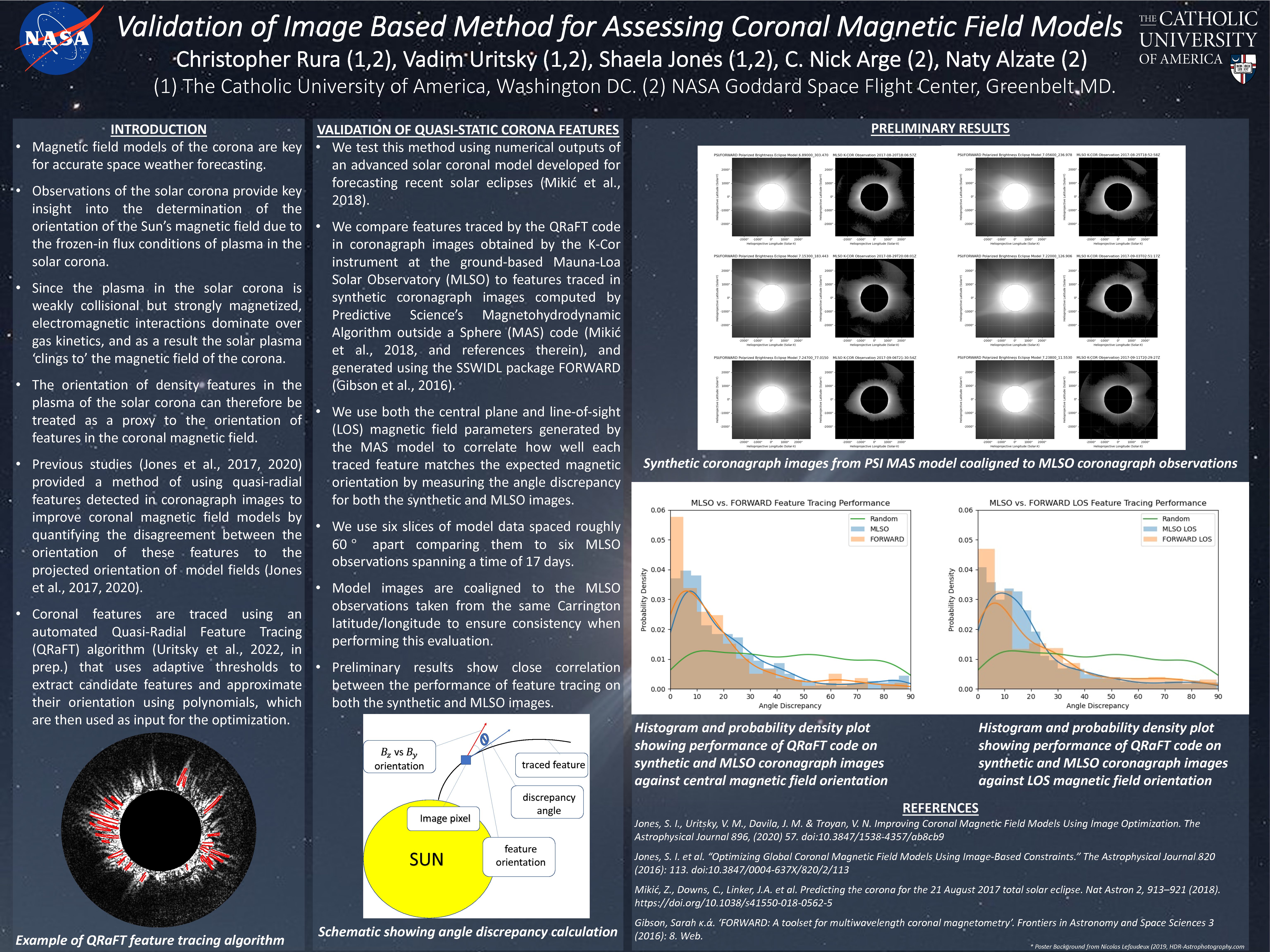Authors: Christopher Rura (the Catholic University of America/NASA GSFC), Vadim Uritsky (the Catholic University of America/NASA GSFC), Shaela Jones (the Catholic University of America/NASA GSFC), Charles Arge (NASA GSFC), Nathalia Alzate (NASA GSFC)
Coronal magnetic field models are key for accurate space weather forecasting. Observations of the solar corona provide key insight into the determination of the orientation of the Sun’s magnetic field due to the frozen-in flux conditions of plasma in the solar corona. Since the plasma in the solar corona is weakly collisional but strongly magnetized, electromagnetic interactions dominate over gas kinetics, and as a result the solar plasma ‘clings to’ the magnetic field of the corona. The orientation of density features in the plasma of the solar corona can therefore be treated as a proxy to the orientation of features in the coronal magnetic field. Previous studies provided a method of using quasi-radial features detected in coronagraph images to improve coronal magnetic field models by comparing the orientation of the detected features to the projected orientation of the model field (Jones et al., 2017, 2020). The disagreement is then quantified and used to optimize the coronal magnetic field model. As a part of these studies, coronal features are traced using an automated Quasi-Radial Feature Tracing (QRaFT) algorithm (Uritsky et al., 2022, in prep.) that uses adaptive thresholds to extract coronal features and approximate their orientation using polynomials. The orientation angles of these traced features are then used as input for the optimization of the coronal magnetic field model. We test this method using numerical outputs of an advanced solar coronal model developed for forecasting recent solar eclipses (Mikić et al., 2018). We compare features traced by the QRaFT code in coronagraph images obtained by the K-Cor instrument at the ground-based Mauna-Loa Solar Observatory to features traced in synthetic coronagraph images computed by Predictive Science’s Magnetohydrodynamic Algorithm outside a Sphere (MAS) code (Mikić et al., 2018, and references therein), and generated using the SSWIDL package FORWARD (Gibson et al., 2016). We then use the magnetic field parameters generated by the model to correlate how well each feature matches the expected magnetic orientation. We show preliminary results and proof of concept of this approach, as well as plans for future work and improvements to the method.


